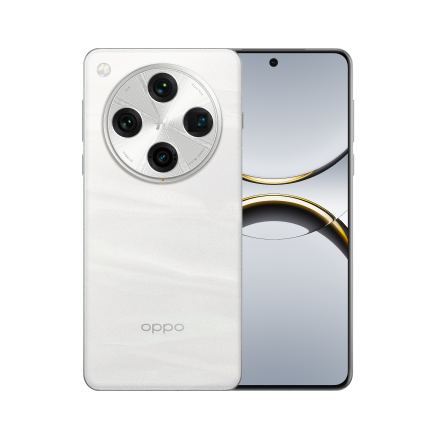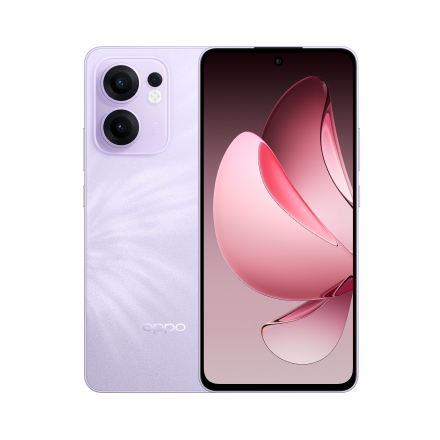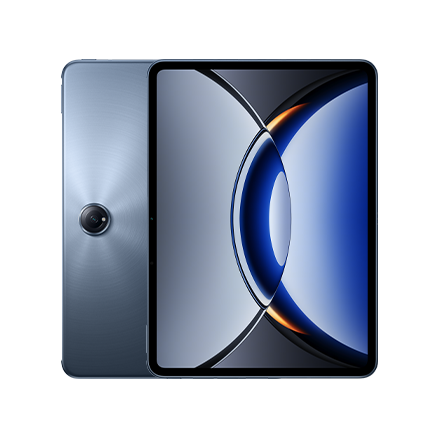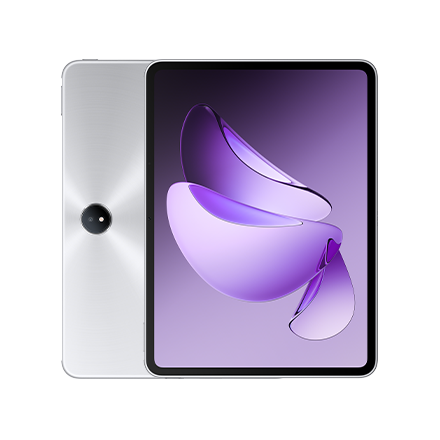
There is a natural assumption our friends see the world just as we do. That a Botticelli painting will look the same to one pair of eyes as another. But our senses are filters through which our brains process sight, sound and taste, and there are greater differences between them than you might imagine.

Colour blindness is said to affect approximately 1 in 12 men and 1 in 200 women in the world, and a number of people are insensitive to certain colours. One person’s experience of a painting, a film or the screen image on their phone is unlikely to be the same as another’s. Here’s another set of data which can better illustrate how colour vision varies among human beings. Based on the Farnsworth Munsell 100 Hue Test, 68% of people have a “medium” level of visual ability and, as noted earlier, 16% are colour impaired in some way. This leaves just 16% with what you might consider very good colour vision.
As a company with millions of customers across the world, OPPO decided to take action.
A phone display made for all eyes
OPPO aims to make sure as many people as possible can experience the best that phones like the new OPPO Find X3 Pro and Find X2 Pro have to offer.
The OPPO Find X3 Pro’s OLED screen can display a billion colours and offers exceptional colour accuracy. But it needs colour modes calibrated to the quirks of real people’s vision, not just those calibrated to match industry standard colour profiles.
To perfect these colour adjustments, OPPO undertook more research, in association with colour science expert and professor Luo Ming of Zhejiang University.
Professor Luo Ming studied a PhD in Colour Chemistry and Colour Technology at the University of Bradford, and worked as a professor at the nearby University of Leeds for eight years.
One aim of the collaboration was to look deeper into the visual characteristics of the human eye and how this can be brought into harmony with the way phone displays relay colour. They found most people who buy an OPPO phone can be divided into three groups. There are colour weak and colour blind people, medium vision people, and those with normal vision. And there are sixteen colour blind men for every one colour blind woman.

OPPO analysed eight methods for testing how people see colour, ultimately focusing on two with the help of professor Luo Ming. These methodologies were used to create an algorithm to let OPPO phone displays adapt to our eyes.
These methods are false colour image detection, commonly used in medicine to diagnose colour-blindness, and the Munsell Colour System. This is used to analyse the colour of real-world tones by breaking them down into their fundamental hue, value (“lightness”) and chroma properties.
This combination lets OPPO optimise both the accuracy of the colour tone on-screen, and how it appears to the person using a phone such as the OPPO Find X3 Pro.
OPPO then tested its screen technology with 100 volunteers from across the globe. Why so many? This let OPPO stress-test its algorithm with a much wider range of visual abilities in real-world scenarios. Perfecting a phone’s display colour in lab conditions is a much easier job than making sure the OPPO Find X3 Pro looks great in every situation. And that is the goal here.
A case of cones
At this point it’s a good idea to spend a moment thinking about how your own vision might differ from the norm, even if you have no obvious sight issues.
Eyes have millions of light receptors called cones. There are three primary groups of these. Each reacts to a set of wavelengths, which correspond to different colours of light. The easy way to interpret this is to consider the cones as made to sense the primary red, green and blue colours. But OPPO took a more rigorous scientific approach, sticking to LMS colour analysis.

These three letters, L, M and S, refer to the long, medium and short wavelengths of light to which the three groups of cones react. The LMS system recognises there is a crossover in these photo receptors’ stimulation, particularly when dealing with the medium and long wavelengths that produce green, yellow, orange and red tones. After all, the OPPO Find X3 Pro has a billion colour tones to consider, not a handful.
Our brains construct an image out of this photoreceptor information. You might have more effective red cones than your best friend, which will make red tones appear more vivid through your eyes. But the more active compensations come into play with colour blind phone users.
A significant impairment in long, medium or short wavelength cones is the primary cause for the three main forms of colour-blindness. These are Deuteranomaly (red-green), Protanomaly (red-green) and Tritanomaly (blue-yellow).

Picture a colourful bowl of fruit and vegetables. Deuteranomaly and Protanomaly will make a red tomato look a similar colour to a green apple. The first reduces the sensitivity to green light, the second to red, and the effect is a flattening of colour contrast. Tritanomaly is rarer, and affects the short wavelength cones that let us perceive colours like blue, purple and turquoise.
OPPO’s Find X3 Pro colour algorithms can correct for all three types, switching out tones on the display to achieve the full colour contrast in an image using the palette available to the viewer. Further OPPO adjustments include a contrast boost to improve visibility.
Optimising colour for a real-world situation is a more involved process than just adapting a phone’s colour profile to suit different eyes. Ambient lighting can also dramatically affect your perception of colour displayed on your OPPO phone’s screen.
For example, if you are in a room lit by very warm-toned lightbulbs, the most popular style for homes, phone displays will appear very “cool” or blueish by comparison. OPPO’s Nature Tone Display feature compensates for this. The colour temperature shifts automatically as lighting changes, so all of the phone’s other colour science improvements aren’t skewed by a cosy orange-tinted bedroom light.
Colour Correction 2.0
Optimisations like Nature Tone Display and compensations for the differing ways our eyes work let you appreciate the best-in-class hardware of phones like 2020’s OPPO Find X2 Pro, with its ultra-smooth 120Hz refresh rate and video-enhancing O1 Ultra Vision Engine.
OPPO has further refined these technologies for the upcoming Find X3 Pro, with version 2.0 of its Colour Correction Solution. This lets you perform a manual test, analysing how you see colour so you get a screen tailor made for your vision.
The result is one of 765 display profiles, aimed at giving you the best movie-watching, gaming and photographic experience you’ve ever seen in a mobile phone.





















